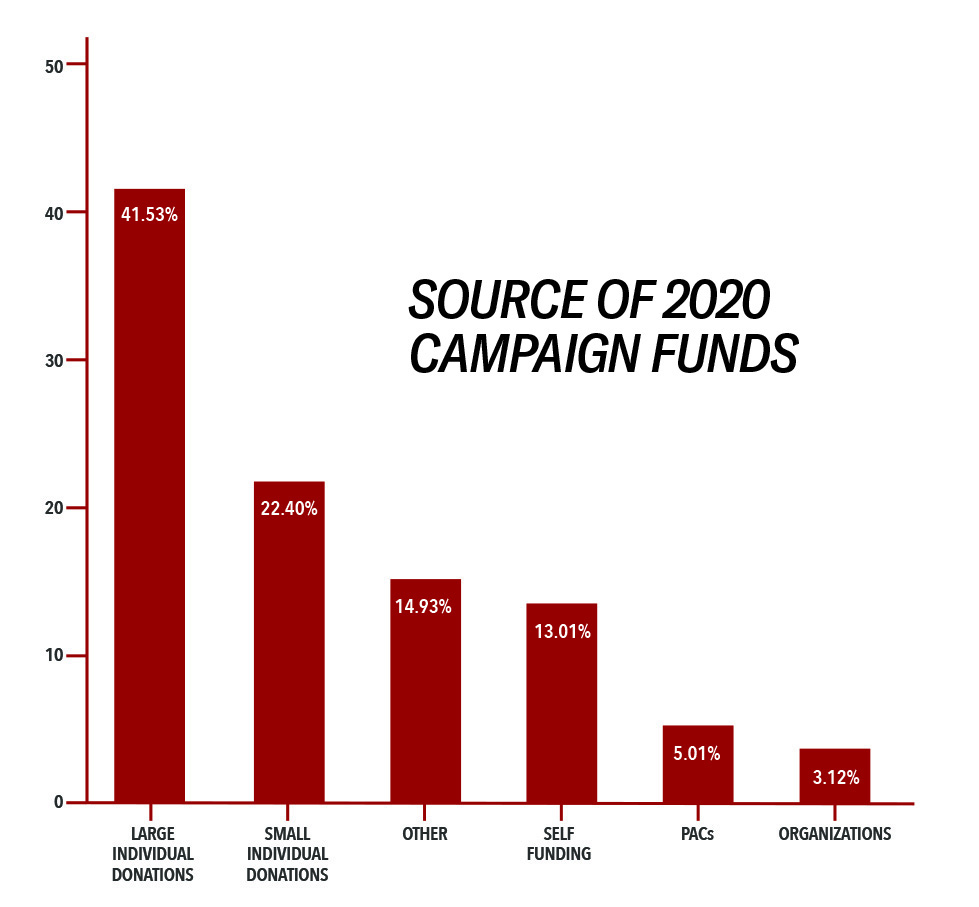So much for less money in politics. The combined spending for the 2020 presidential and congressional campaigns will double what was spent in 2016, which then was the most expensive campaign in United States political history.
Politicians on both sides are very good at playing the “we hate money in politics” game. During the 2016 primary, then-candidate Donald Trump played up his wealth as a means of distancing himself from the donors he said “controlled” other candidates, particularly Jeb Bush. Democrats, meanwhile, decry the use of “big money” in politics. One of the favorite targets of Democrats is the Supreme Court’s Citizens United decision that paved the way for “wealthy donors” and “corporate interests” to make unlimited donations to independent-expenditure committees, better known as super PACs. Ironically, one of the more famous super PACs to form during the current election cycle, the Lincoln Project, raised $39 million in the third quarter of 2020 and is strongly anti-Trump.

According to OpenSecrets, part of the Center for Responsive Politics, outside spending from political parties, super PACs, and “dark money” groups that are formed in ways that don’t require the disclosure of donors spent $2.6 billion this election cycle, nearly doubling what was spent in 2016.
Industries have also increased donation totals. The top three sectors — securities and investments, the legal profession, and education — have spent far more on Democrats than Republicans. About 90% of the money donated by the education industry goes to the Democratic Party. Democrats, fueled by their desire to defeat Trump in his reelection effort, spent nearly $7 billion, almost twice the $3.8 billion that the Republican Party spent. The last presidential election that the Democrats outspent the GOP was 2008, when voter excitement and utilization of small donors fueled the presidential campaign of then-candidate Barack Obama.
Campaigns have also depended on online fundraising with the difficulties of the pandemic, making high-priced indoor fundraising events challenging to pull off, especially as COVID-19 cases are on the rise again. Campaigns spent money online to build donor lists and paid over $1 billion to advertise on Facebook and Google this election cycle, according to OpenSecrets.
The only fundraising arm losing influence is the traditional PAC, which corporations typically use to build influence with elected politicians. However, with a $5,000 maximum contribution limit, PACs made up a mere 5% of the overall spending in 2020. The PAC influence loss makes it easy for candidates, usually Democrats, to refuse to take money from PACs. That still leaves the opportunity to take millions in donations from corporate interests. It merely means it takes a little more digging to find the source.
The last campaign finance reform law, the Bipartisan Campaign Reform Act, aka McCain-Feingold, of 2002, led to the creating of the super PAC and some weakening of the party system when unlimited “soft” contributions to political parties were outlawed. Some experts believe the inability of the Democratic Party or the GOP to assert more control over candidates with money has led to more partisanship in Washington, D.C. Super PACs have narrow interests and exert more influence, leading to politicians in office who have no incentive to cooperate, not only with the opposing party but within their party.
With no changes on the horizon, it’s very likely the fundraising and spending in the 2024 election cycle will topple the latest record.

